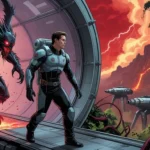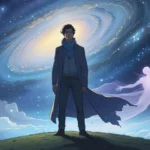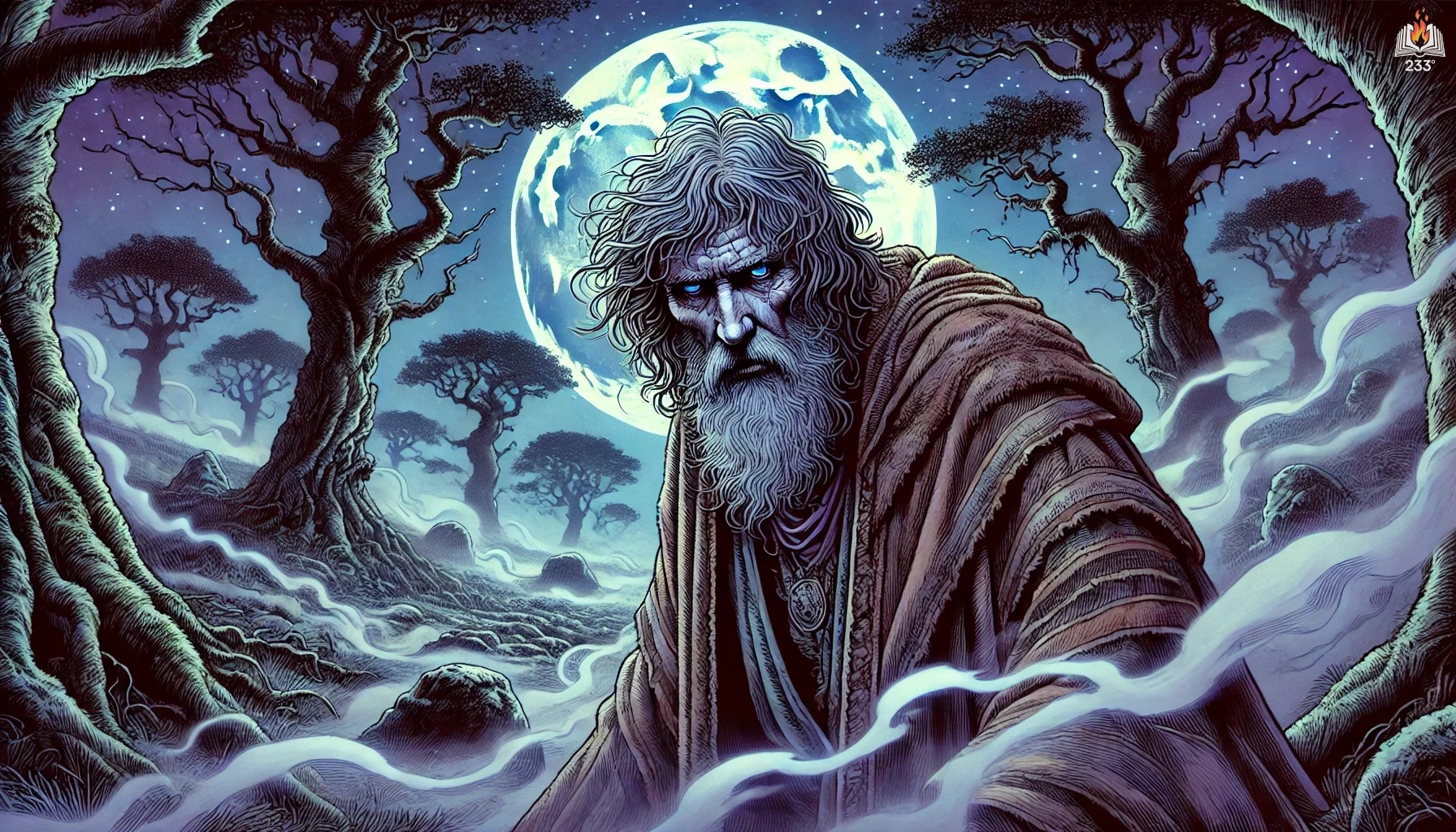Planet of the Damned is a science fiction novel by Harry Harrison, first published in 1962. The story revolves around Brion Brandd, a resident of the harsh, icy planet Anvhar. The narrative explores Brion’s journey from being the victor of an intense competition called “the Twenties” to confronting a dire situation on the hostile desert world of Dis. The tale is set in a universe where survival often hinges on physical and mental prowess, and civilizations clash in their pursuit of survival and dominance.
Plot Summary
Brion Brandd stood alone on the ice-covered plains of Anvhar, the weight of his recent victory still settling in. The Twenties, a grueling contest of mental and physical prowess, had come to an end. For most on this frigid planet, winning the Twenties was the pinnacle of achievement, a lifelong dream realized. But for Brion, the victory felt strangely hollow, like a question waiting for an answer. His eyes drifted over the icy horizon, seeking something he couldn’t name, a purpose beyond the contests and the acclaim of his fellow Anvharians.
That purpose arrived in the form of Ihjel, a former Twenties champion who now worked for the shadowy Cultural Relationships Foundation. Ihjel came with a proposition, one that would take Brion far from the icy comfort of his home planet to the fiery, deadly world of Dis. Nyjord, a neighboring planet, was facing an existential threat from the inhabitants of Dis. The Disans had obtained cobalt bombs and were prepared to launch them, demanding the unconditional surrender of Nyjord. The deadline was imminent, and the stakes were nothing less than the survival of millions.
Intrigued and compelled by Ihjel’s urgency, Brion agreed to join the mission. He realized that his victory in the Twenties had merely prepared him for this greater challenge. The Foundation believed that Brion’s unique empathetic abilities—honed during the intense competitions of Anvhar—could make a difference on Dis. It wasn’t just about stopping a war; it was about understanding why the Disans, a seemingly primitive and hostile people, were willing to obliterate themselves and another world in the process.
Dis was unlike anything Brion had ever experienced. Where Anvhar was cold and harsh, Dis was a furnace. The sun beat down on a landscape of burning sand and jagged rock, a world where survival was a daily battle against the elements. The Disans had adapted to their environment in ways that bordered on the miraculous, their bodies and minds hardened by generations of struggle. Their skin was tough and leathery, their eyes shielded against the searing light, and they moved with a wary, predatory grace that spoke of constant vigilance.
Brion, along with Ihjel and the exobiologist Lea Morees, who joined them later, found themselves in the midst of a complex and dangerous situation. The Disans were not just hostile to outsiders; they were hostile to life itself, a reflection of their brutal environment. Every encounter with the natives was fraught with danger. They carried strange, primitive weapons and tools that hinted at a society built on survival and violence. They spoke in a guttural, half-swallowed language that seemed more suited to threats than conversation.
Lea Morees brought a scientific eye to the mission, but even she was baffled by what she saw. The Disans had developed a symbiotic relationship with their world, a complex web of interactions that allowed them to survive where no one else could. But this symbiosis had come at a cost. Their bodies had changed to store water, withstand the heat, and extract nutrients from the sparse environment. Their minds, too, had adapted, becoming as harsh and unforgiving as the desert they called home.
As Brion and his team delved deeper into the Disan culture, they discovered that the hostility towards Nyjord was not born out of a simple desire for conquest or power. It was something far deeper, a collective madness brought on by generations of isolation and fear. The Disans believed that any contact with the outside world would bring ruin upon them. They saw the Nyjorders as a direct threat to their way of life, an intrusion that would destroy the delicate balance they had achieved with their environment.
Ihjel had warned Brion that this mission would be dangerous, but the reality surpassed all expectations. Dis was a world teetering on the edge of self-destruction, and its people were more than willing to take Nyjord down with them. Ihjel, the tough, pragmatic leader, soon met his end in a confrontation with the Disans, leaving Brion and Lea to continue the mission alone. His death underscored the seriousness of their situation. They were outsiders in a world that despised outsiders, trying to prevent an apocalypse that seemed inevitable.
Brion’s empathetic abilities, which had served him so well in the Twenties, became his greatest asset on Dis. He began to understand the Disans in a way that no one else could. He felt their fear, their rage, their determination to remain untouched by the galaxy beyond their burning sands. It wasn’t just about stopping the bombs; it was about reaching into the heart of a culture and finding the humanity buried beneath layers of adaptation and survival.
The days turned into a frantic race against time. Brion and Lea searched for the bombs, trying to locate them before the Disans could launch their devastating attack. But the real challenge lay in changing the Disans’ mindset. Brion used his empathy to connect with their leader, an effort that required him to go beyond language and logic, to reach a place of shared understanding. He conveyed the futility of their plan, the destruction it would bring not just to Nyjord but to Dis itself. It was a dangerous gambit, one that could have ended in his death. But in the end, it worked.
The Disans agreed to dismantle their weapons, to explore a different future, one that involved cooperation rather than annihilation. It was a tenuous peace, fragile and uncertain, but it was a beginning. Brion realized that his victory on Anvhar had been merely a prelude to this moment. True success was not about personal triumph but about using one’s abilities to make a difference in the lives of others. It was a lesson he had learned in the harsh desert of Dis, a world that had tested him to his limits and beyond.
Brion Brandd returned to Anvhar not as a victor of the Twenties but as a man who had discovered a greater purpose. He had faced the unknown, bridged the gap between two worlds, and averted a catastrophe. And in doing so, he had found the answer to the question that had haunted him since his victory in the Twenties. The real challenge was not in winning but in understanding, in reaching out to others and making a difference in a universe filled with conflict and fear.
Main Characters
- Brion Brandd: The protagonist, a champion of Anvhar’s Twenties. He is a skilled athlete, thinker, and empath, driven by a desire to find meaning beyond personal glory.
- Ihjel: A former Twenties winner and an agent of the Cultural Relationships Foundation. He recruits Brion to help avert a crisis on Dis, sacrificing himself for the mission.
- Lea Morees: An exobiologist who joins Brion and Ihjel on Dis. She brings scientific expertise and a fresh perspective to the team’s efforts to understand the Disans.
- Disans: The inhabitants of Dis, a harsh desert world. They have adapted to their environment in extreme ways, leading to a culture marked by hostility and self-destructive tendencies.
Theme
- Adaptation and Survival: The novel explores how environments shape societies. The Disans have evolved to survive in a hostile world, but their adaptations have also led to a culture of violence and mistrust.
- Empathy and Understanding: Brion’s journey is as much about understanding others as it is about saving them. His empathic abilities allow him to connect with the Disans on a deeper level, offering a chance for peace.
- The Individual vs. the Greater Good: Brion learns that true victory is not about personal achievement but using one’s abilities for the benefit of others. This theme is central to the story’s resolution.
- Isolation vs. Connection: Dis and Nyjord represent two extremes of societal development—one isolated and hostile, the other peaceful and cooperative. The novel suggests that connection and understanding are crucial for coexistence.
Writing Style and Tone
Harry Harrison’s writing in Planet of the Damned is direct and action-oriented, focusing on the development of plot and character. The tone is serious and urgent, reflecting the high stakes of the conflict. Harrison uses detailed descriptions to convey the harsh environments of both Anvhar and Dis, emphasizing the physical and psychological challenges faced by the characters. Dialogue is used effectively to reveal character motivations and advance the story, particularly in the interactions between Brion, Ihjel, and the Disans.
We hope this summary has sparked your interest and would appreciate you following Celsius 233 on social media:
There’s a treasure trove of other fascinating book summaries waiting for you. Check out our collection of stories that inspire, thrill, and provoke thought, just like this one by checking out the Book Shelf or the Library
Remember, while our summaries capture the essence, they can never replace the full experience of reading the book. If this summary intrigued you, consider diving into the complete story – buy the book and immerse yourself in the author’s original work.
If you want to request a book summary, click here.
When Saurabh is not working/watching football/reading books/traveling, you can reach him via Twitter/X, LinkedIn, or Threads
Restart reading!








